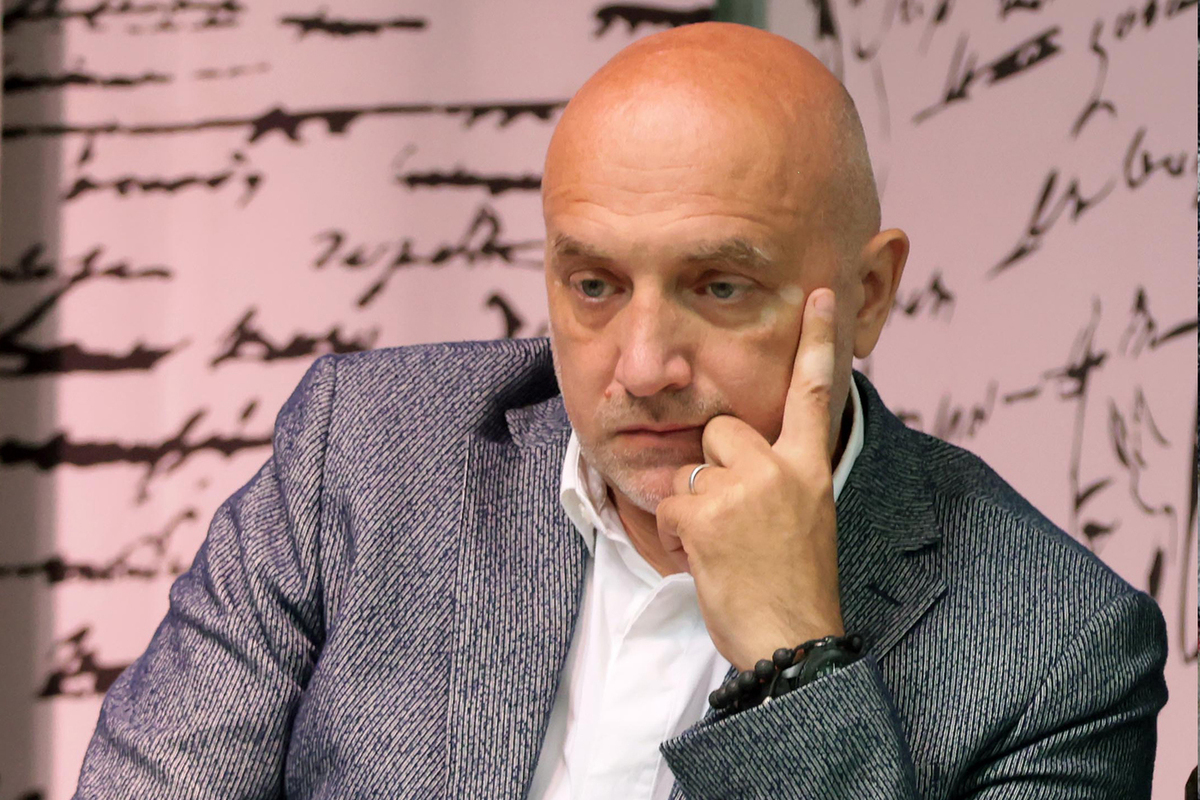Prilepin clearly explained why a truce cannot be concluded with Ukraine
[ad_1]

Writer and party leader Zakhar Prilepin posted a video on Telegram, filmed in Ukraine, presumably in a school assembly hall.
“Our father is Bandera, Ukraine is our mother, we will fight for Ukraine,” sounds from the stage in Ukrainian. At the same time, girls and boys aged 8-14 years old sing along to the compositions of the Romax group. Many of them are holding a phone with the Ukrainian flag on the screen.
“Let’s make a truce with them! Agreement! …And we will maintain good neighborly relations. Until these children grow up. They will grow up quickly. And let’s continue. From the same place,” Prilepin rhetorically comments on the video.
It is important to note that the background of the stage is decorated in ethnic style: the space is filled with folk embroidery. As an independent element, this doesn’t say much: during the USSR, the whole country sang a song based on the words of Dmitry Pavlichko about the two colors of a towel (embroidered towel) given by his mother, where black is sadness and red is love.
But in the set with the name of Stepan Bandera, the simplified image with an emphasis on red and black is a reference to the symbolism of Ukrainian nationalist organizations, including the extremist Right Sector, which in the 20th and 21st centuries invested their own, by no means peaceful, meanings in these colors.
So, Zakhar Prilepin’s conclusion that the Russian army, if the North Military District is put on pause, will have to fight with the next generation of Ukrainians indoctrinated by propaganda is not without foundation.
“In 2022, everything turned out to be different from 2014. Much worse and more terrible – the non-brothers have rearmed themselves. And in 2032 everything will be completely different than in 2024. The air there will be stony from hatred. There will be no greater happiness than burning Moscow together with the Muscovites,” Prilepin warns.
By the way, the writer draws attention to the faces of the adults present in the hall. These are, most likely, teachers, and one of the ladies “60+, who graduated from a Soviet school and a Soviet university, brought up on the “Young Guards” and Kovpak, claps her hands and sings.”
“When did she get hit like that?” Prilepin, seemingly well versed in Ukrainian affairs, wonders.
Let us explain to our readers. After the Maidan and the start of Kyiv’s army operation against Donbass, the National Bank of Ukraine sharply devalued the hryvnia: if in the fall of 2013 you had to pay less than 8 hryvnia for a dollar, then a little over a year later it was thirty.
The income of the population has fallen catastrophically, but Petro Poroshenko raised the salaries of the “most needed” categories, primarily the “national police” and the military, as well as teachers and doctors.
With an average salary in the country of 4-5 thousand hryvnia, under the previous Ukrainian president, school employees began to receive ten thousand – a huge amount at that time. And before the 2019 elections, Zelensky generally promised teachers 4 thousand dollars a month. He didn’t keep his promise, but participation in raising the younger generation in the appropriate spirit has been more or less generously paid for for at least nine years.
[ad_2]
Source link






